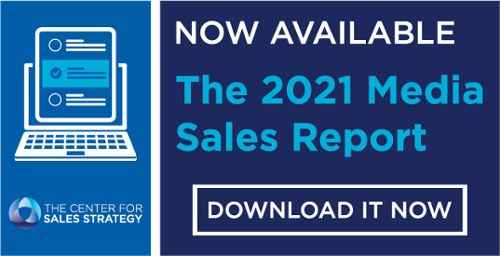
If you think cold emailing is dead, you're wrong.
59% of B2B companies say email is the most effective channel for generating revenue. It's one of the most cost-effective forms of outreach that there is.
At the same time, you need to realize that you're not the only one sending emails. HBR reports that on average, professionals have more than 200 emails in their inbox and receive 120 new ones each day but respond to only 25% of them.
If you want to get a response to your emails, you'll need to employ the magic of etiquette, one of the best ways to create a human connection with the reader.
In this post, we talk about a few common mistakes people make writing cold emails, and some advice on how to improve these areas.
Common Email Mistakes
Mistake 1: Sounding Like a Robot
The fact that cold emails are already cold puts them at a disadvantage. If a cold email lacks emotion, the chances of getting ignored are very high.
The more impersonal the email appears, the more likely the recipients may think of it as automated. Some might even think it doesn’t warrant a reply.
Let’s face it, no one is interested in talking to faceless corporations.
Here are a few mistakes that can make your email appear like it was written by a robot:
From Name Mistakes
- The from name only consists of the name of a company or a department rather than a person’s name. Example: using "Marketing" for Marketing@xyz.com.
- Using the email address as the from name, instead of the person’s name.
- The from name and from address don't match. Example: the from name is Robert, but the email address is C1329@xyz.com.
Solution: Make sure the "from name" is that of a real person. If you want the brand name to present (especially if the brand is a famous one), you can try Bruce from Wayne Enterprises.
Subject Line Mistakes
- Using impersonal and ambiguous subject lines like "Interesting," "Urgent," "Hi," "Connection Request," etc.
- Long and drawn out subject lines.
- Using spammy words.
- Using your organization’s name or your name in the email subject line.
- Using the same subject line over and over.
- Employing acronyms.
- Sending emails without a subject line.
- Not optimizing the preheader text to supplement the subject line.
Solution: People expect the subject line to tell them what the email is about. It needs to look trustworthy and connect emotionally with the recipient. This is why it is so important to avoid the above-mentioned mistakes.
Instead, you can personalize the subject line by adding the recipient’s name, tweaking it according to their location, making sure the context is relevant to the recipient, etc. Using the word ‘you’ and ‘your’ can also help in boosting open rates.
Email Body Mistakes
- Being too formal.
- Using generic opening lines like hope you are well, how are you doing today, trust you had a good day, etc.
- Using monotonous sentences.
- Using templates without personalizing them.
- No consistency between email body and email subject line.
- Not giving a specific action item.
- Not including the recipient’s name.
- Using copy-paste text, which may cause formatting errors.
Solution: For a cold email campaign to be successful, it has to connect with the readers. You should use a warm and friendly tone to make the email look genuine. Bring personalization using variables like location, recipient name, persona specific content, etc.
Mistake 2: Not Explaining Why You're Emailing
Marketers and salespeople often make the mistake of forgetting to mention why the recipient should be interested in the email or how it is relevant to them.
It is crucial that you tell recipients why you are emailing them, right up front. It gives context to the conversation and a reason to read the rest of it. For instance, if you are sending a cold email to a decision influencer, make sure you acknowledge their expertise first. Then make your intentions clear: you want their feedback on your product, or a may be a share, etc.
Mistake 3: Using URLs Instead of Hyperlinking
Adding whole URLs to your email can instantly bring down the attractiveness of your email. It can also disrupt the meaning and flow of the sentences.
The best way to solve this problem is by hyperlinking the URL with a word or phrase that fits the context.
Few points to remember while doing this:
- Make sure the hyperlink color is distinct and easily identifiable.
- Links should take the reader to right the place (avoid redirects).
- Make sure the landing page has a responsive design.
- Don’t use link shorteners.
Mistake 4: Trying Too Hard to Get Replies
When you aggressively pursue replies (too many follow-ups, asking for read receipts, etc.), people tend to get infuriated.
This is why you should shift your focus from replies to engagement. And by engagement, you shouldn’t limit to just open rate or click rate. You need to go beyond, and understand how readers engaged with the landing page you linked to, the pages recipients accessed, areas of the website they visited the most, etc. This information will help you tweak the email according to their levels of engagement.
Another way to get more replies without trying too hard is to get your timing right. Studies have shown that Tuesday, Wednesday, and Thursday tend to be the best days to email. As for the time slots, you will have to keep testing, track open rates, and optimize accordingly. You can use a tool like Hiver to track email opens and schedule your emails free of cost.
Wrapping Up
These are some one of the important mistakes you should avoid. Of course you should also keep in mind the more basic mistakes, like grammar errors, formatting errors, too many CTAs in one email, personalization errors in your email list, etc.
You cannot afford to get any of these wrong if you want people to engage with your emails. Showing that you're a real human and following considerate etiquette will increase your effectiveness and lead to better results from your cold emails.
Editor's Note: This blog was originally written in 2017 and has since been updated.




